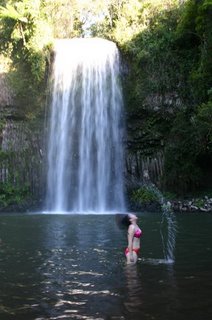Thomas Nast
Thomas Nast (September 27, 1840 – December 7, 1902) was a famous caricaturist and editorial cartoonist in the 19th century and is considered to be the father of American political cartooning.
Thomas Nast (September 27, 1840 – December 7, 1902) was a famous caricaturist and editorial cartoonist in the 19th century and is considered to be the father of American political cartooning.
He was born in the barracks of Landau, Germany (in the Rhine Palatinate), the son of a musician in the 9th regiment Bavarian band. His mother took him to New York in 1846. He studied art there for about a year with Alfred Fredericks and Theodore Kaufmann and at the school of the National Academy of Design. After school (at the age of 15), he started working in 1855 as a draftsman for Frank Leslies Illustrated Newspaper; three years afterwards for Harper's Weekly.
Nast drew for Harper's Weekly from 1859 to 1860 and from 1862 until 1886. In 1860 he went to England for the New York Illustrated News to depict the prize fight between Heenan and Sayers, and then joined Garibaldi in Italy as artist for The Illustrated London News. Nast's cartoons and articles about the Garibaldi military campaign to unify Italy captured the popular imagination in the U.S. In the early 1860s, he married Sarah Edwards.

In a moment of spontaneity, we signed up for a guided tour of Queensland's Atherton Tableland region, solely on the recommendation of our hostel's travel agent. She said that we would like it so much that we would recommend the tour to an entire tour bus full of our friends. She also said that "Uncle Brian", the owner and guide of the tour, was a bit of a local legend. The next thing we knew, it was 7:30am and we were waiting outside our hostel for Uncle Brian to pick us up.

2. Uncle Brian had puzzles and chocolate for us to help pass the time on the longer stretches of driving. He also organized a few "get to know you" games.
3. At beautiful Milla Milla falls, Uncle Brian showed us how to re-enact the Timotei Shampoo commercial that was filmed there. Does this picture make you want to buy shampoo?

4. "Gus FM", our lovely bus's tunes, just made us want to dance. In unison. Like, to "YMCA", say.
By the end of our day, everyone was in an extremely good mood (or driving on the "bright side of the road", as Gus would say). We also felt like we had just made 22 new friends. Up at the front of Gus, Uncle Brian kept his doll Elmo (who he would wave out the window at other buses that passed by). Elmo was given to Uncle Brian by a six-year old girl who, at the end of the tour, told him that it was Elmo's best day of his life. She wanted Elmo to have that much fun every day, so she left him with Uncle Brian. After 13 hours with Uncle Brian and Gus, we could see why.

Thanks Uncle Brian and Gus for a fantastic day! Whooshka!